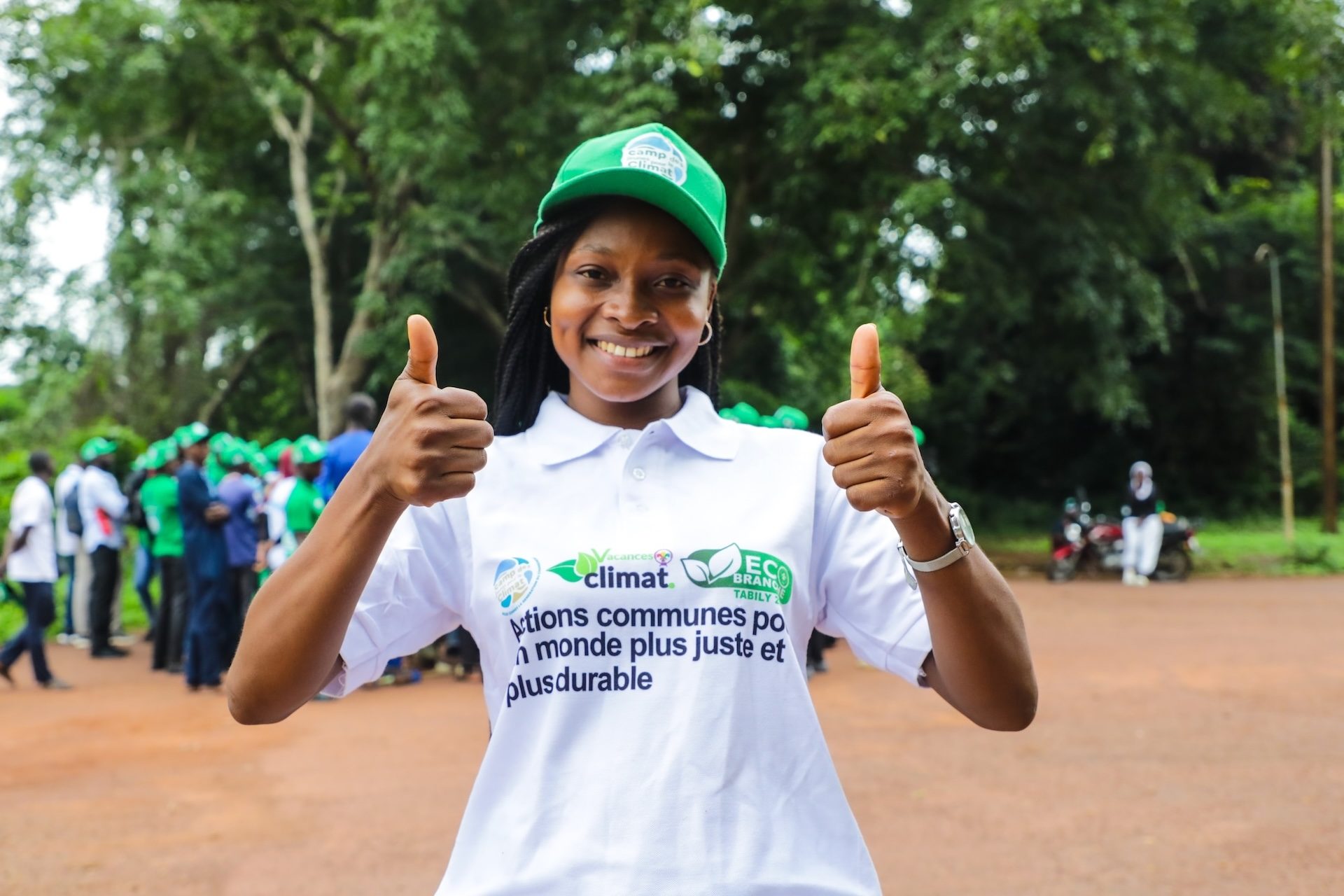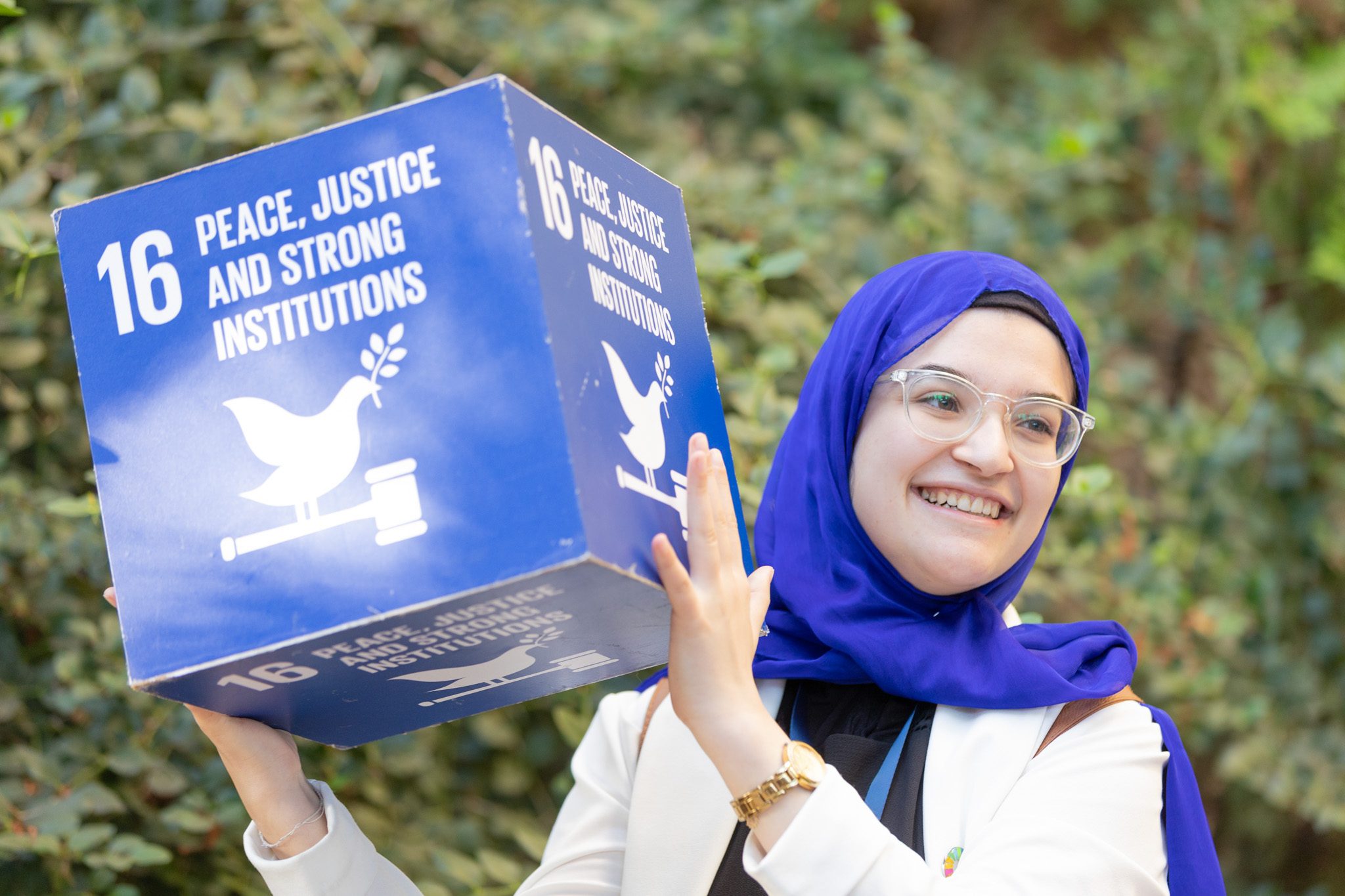
Photo: Bakary Cissoko / UNDP Guinea
Climate change and violent conflict are two major crises reshaping the global landscape today, placing an immense burden on young people, especially those in fragile and conflict-affected regions. Of the 1.45 billion young people around the world aged 18 to 29, 690 million live in countries and regions experiencing violent conflict. At the same time, 1 billion young people live in less developed regions, where the impacts of climate change are felt most severely. Many of the countries that are most vulnerable to climate change are also among the most fragile, with large youth populations confronting overlapping crises that heighten risks and widen inequalities, particularly for young women.
In the face of the interlinked climate and conflict crises, young people are not standing idly by. Growing numbers of young people from diverse backgrounds recognize the need to see climate and security challenges through an integrated lens. They are driving change in their communities, taking on roles as frontline responders, climate innovators, advocates and peacebuilders.
However, despite their leadership in both climate and peacebuilding movements, youth perspectives remain marginalized in decision-making and policy discussions. Too often, they are framed as victims or potential security threats rather than as powerful agents of change. This exclusion is particularly stark in the political sphere—while people under 30 make up half of the world’s population, only less than 3 percent hold parliamentary seats. It is time to move beyond this vulnerability narrative and recognize young people as key players in addressing climate-related security risks and in leading climate resilience and peacebuilding interventions.
Understanding the pathways of climate insecurity
To better understand how young people experience and respond to climate-related security risks, we need to advance an integrated approach to youth, climate, peace and security. Our new publication, Beyond vulnerability: A guidance note on youth, climate, peace and security, co-authored by Folke Bernadotte Academy (FBA), UNDP and the Stockholm International Peace Research Institute (SIPRI), explores the intersection of climate action and peacebuilding initiatives from a youth perspective, offering insights for researchers, practitioners and policymakers.
Although climate change is rarely the main driver of conflict, its impacts can undermine development, exacerbate existing tensions and ongoing violence, and disrupt fragile peace efforts. There are four interrelated pathways through which climate change interacts with economic, social and political factors to increase the risk of conflict in fragile contexts, heavily impacting the lives of young people:
- Deteriorating livelihoods: Climate change impacts such as more frequent and intense droughts, floods and extreme weather events threaten livelihoods, leading to food insecurity, poverty and deeper inequalities, affecting young people in particular ways. Economic instability can force young people into premature breadwinning roles or, particularly for girls, early marriage. Disruptions to education and employment can also prolong dependence on older generations. Therefore, climate change can either prematurely accelerate or forcibly delay young people’s transitions to autonomy, heavily impacting their future.
- Increased migration and shifting mobility patterns: Climate-induced displacement and migration creates new challenges, potentially leading to tensions and conflicts between migrating and host communities. Young people are particularly at risk in these situations, facing increased vulnerability to gender-based violence, exploitation and discrimination. Young women, girls and LGBTQI+ youth are particularly vulnerable to sexual exploitation and gender-based violence. Those over 18 often ‘age out’ of protection systems despite needing continued support. Many struggle to access education, employment, healthcare and safety while facing racism, xenophobia and restricted mobility.
- Tactical considerations of armed groups: Armed groups often exploit climate-related vulnerabilities to bolster their recruitment efforts or consolidate power, particularly in areas with weak governance or low trust in governments. In these scenarios, some young people—particularly already marginalized young men—may voluntarily or involuntarily become involved with armed groups as a survival strategy. However, only a small fraction of young people engage in violent extremism, challenging broad-stroke narratives of youth radicalization.
- Elite exploitation and resource mismanagement: National and local elites often exploit climate-related stresses as a pretext to seize resources or displace communities for their own benefit. In such contexts, young people—especially young women—face further marginalization due to limited access to decision-making and resources. Political leaders may exploit their frustrations, mobilizing them as instruments of conflict or fostering narratives of militarized, rebellious youth. However, while exclusion and disenfranchisement can heighten tensions, most young people seek agency through peaceful means rather than violence.
Young people are driving solutions for change
While climate-related security risks threaten peace and stability, integrated responses in climate mitigation, adaptation and peacebuilding can help address these risks through, for example, the intentional design of programmes and activities that tackle multiple challenges simultaneously. Young people are already leading initiatives across these entry points—reducing greenhouse gas emissions, ensuring food security, preventing resource conflicts, and promoting peace and justice.
Climate change mitigation can serve as an entry point for addressing climate-related security risks. In the Democratic Republic of Congo, the youth-led organizations Enable the Disable Action (EDA) and JAMAA Grands Lacs are addressing both climate change and insecurity by engaging young persons with disabilities and displaced women in bio-charcoal production, which is several times more efficient than firewood or charcoal. Their initiatives help reduce deforestation and greenhouse gas emissions while making young persons with disabilities and displaced women more financially independent and less vulnerable to violence.

Photo: UNDP Lebanon
Climate change adaptation is another entry point for addressing climate-related security risks by reducing vulnerabilities and building resilience to climate impacts. In Pakistan, a “green squad” of young people support farmers in implementing climate-smart agriculture practices in flood-prone regions. This helps enhance food security in these areas, which in turn strengthens intercommunal stability by addressing forced migration, displacement and competition over resources when floods happen. Collaborative adaptation responses also help manage disputes and displacement. On the border of Paraguay and Brazil, a youth collective unites activists from 25 cities to manage disputes and displacement, including those of Indigenous populations, following the construction of a large-scale cross-border hydroelectric dam.
Peace and security interventions can also serve as entry points for addressing climate-related security risks. These interventions can include conflict resolution mechanisms and inclusive governance structures which consider environmental stressors, as well as nonviolent resistance. In Dominica, Indigenous youth are leading climate justice efforts, hosting the island’s first conference on climate justice and elevating official recognition of climate-related security risks.
These youth-led initiatives exemplify the power of young people in driving policy change, fostering resilience and building cross-sector collaboration in addressing climate, peace and security challenges.
Developing a youth, climate, peace and security approach
Although the connections between youth, climate, peace and security are evident in reality, they have not been adequately translated into integrated policy and programming approaches. An integrated youth, climate, peace and security approach can be a powerful opportunity to achieve meaningful and lasting impact across multiple domains including research, analysis, programming, strategic planning, policy-making and funding.
At its core, this integrated approach recognizes young people as agents of change, fostering interdisciplinary collaboration across climate, security, development and peacebuilding. It acknowledges the intersectionality of youth identities—considering gender, ethnicity, socioeconomic status, and geography—to ensure inclusive, effective responses to climate-related security challenges. Special attention is given to marginalized groups, including persons with disabilities, young migrants and Indigenous youth.
A key pillar of this approach is fostering intergenerational dialogues, creating spaces where young people and older generations from different backgrounds exchange knowledge, share experiences and co-create holistic, sustainable solutions. Applying both youth and climate lenses is also crucial to ensuring that policies and programmes address the unique needs of young people while tackling environmental realities head-on.
Finally, allocating the necessary financial and technical resources is key. Each agenda requires funding, but the priority should be on supporting integrated youth, climate, peace and security initiatives by utilizing and expanding existing funding channels that focus on the interconnectedness of these issues.
By harnessing youth expertise, strengthening cross-sector partnerships and investing in a youth-powered future that prioritizes peace, security and climate resilience, the youth, climate, peace and security approach offers a way to secure a sustainable future. Let’s take it.
*
Beyond vulnerability: A guidance note on youth, climate, peace and security was co-authored by Folke Bernadotte Academy (FBA), UNDP and the Stockholm International Peace Research Institute (SIPRI). The publication is the first to bridge the climate, peace and security and youth, peace and security agendas. It explores the intersection of climate action and peacebuilding initiatives from the perspective of youth engagement, offering insights for practitioners and policymakers to advance a unified approach to youth, climate, peace and security in development policies and programmes.
The guidance was developed using desk research, qualitative interviews, focus group discussions and consultations. A sounding board of young climate professionals, peacebuilders, and global experts shaped the research agenda, provided inputs and written submissions. Their feedback and review, along with organizational peer-review, ensured the credibility and validity of findings and recommendations.